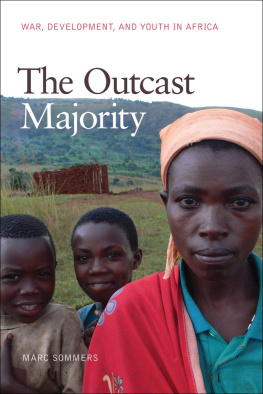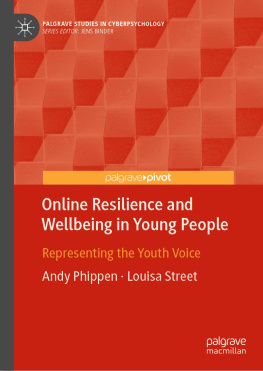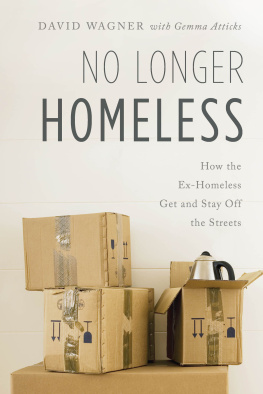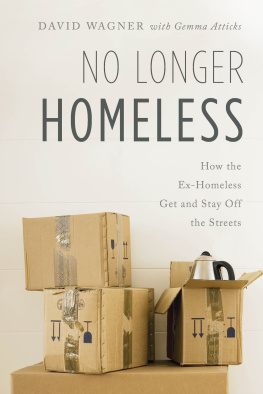STAYING ALIVE WHILE LIVING THE LIFE
STAYING ALIVE WHILE LIVING THE LIFE
Adversity, Strength, and Resilience in the Lives of Homeless Youth
Sue-Ann MacDonald
& Benjamin Roebuck
Fernwood Publishing
Halifax & Winnipeg
Copyright 2018 Sue-Ann MacDonald and Benjamin Roebuck
All rights reserved. No part of this book may be reproduced or transmitted in any form by any means without permission in writing from the publisher, except by a reviewer, who may quote brief passages in a review.
Editing: Erin Seatter
Cover design: John van der Woude
Printed and bound in Canada
eBook: tikaebooks.com
Published by Fernwood Publishing
32 Oceanvista Lane, Black Point, Nova Scotia, B0J 1B0
and 748 Broadway Avenue, Winnipeg, Manitoba, R3G 0X3
www.fernwoodpublishing.ca
Fernwood Publishing Company Limited gratefully acknowledges the financial support of the Government of Canada, the Canada Council for the Arts, the Manitoba Department of Culture, Heritage and Tourism under the Manitoba Publishers Marketing Assistance Program and the Province of Manitoba, through the Book Publishing Tax Credit, for our publishing program. We are pleased to work in partnership with the Province of Nova Scotia to develop and promote our creative industries for the benefit of all Nova Scotians.

Library and Archives Canada Cataloguing in Publication
MacDonald, Sue-Ann, 1972-, author
Staying alive while living the life: adversity, strength, and resilience in the lives of homeless youth / Sue-Ann MacDonald, Benjamin Roebuck.
Issued in print and electronic formats.
ISBN 978-1-55266-932-7 (softcover).ISBN 978-1-55266-933-4 (EPUB).ISBN 978-1-55266-934-1 (Kindle)
1. Homeless youth. 2. Homeless youthSocial life and customs. 3. Homeless youthSocial conditions. 4. Homelessness. I. Roebuck, Benjamin, 1982, author II. Title.
HV4493.M33 2018 362.775692 C2018-903945-0
C2018-904545-0
Contents
This research is dedicated to the young people of Ottawa sleeping on sidewalks and park benches; in elevators, stairwells, and parking garages; under bridges and along riverbanks; on the couches of friends and strangers; in shelters and transitional housing; and camped out in the forests of the Greenbelt. Your stories have moved us, challenged us, and inspired our hearts. You are so strong. Do not allow your hope for a better tomorrow to slip away. Grasp it tightly!
This book would have never come to fruition without the trust the youth offered us. These experiences, the sharing of intimate parts of their daily lives, have been humbling, inspiring, and all too often angering and saddening. We wish you all the best in the pursuit of your dreams, and we remain inspired by your perseverance and creativity in the face of so much injustice.
Acknowledgements
Sue-Ann
This project would not have been possible without the support and blind trust of homeless youth organizations and the numerous service providers that I worked with for many years, who encouraged me in my doctoral research and embraced the complexity of the researcher-practitioner dynamic. I deeply admire your passion for your work and efforts to serve and help others, as well as your constant drive to innovate and renew practice.
Coupled with this unwavering support, the judicious counsel of my thesis supervisor, Cline Bellot, over so many years cannot be overlooked. Her deep passion for combatting social injustice in innovative ways offers a constant source of inspiration. Similarly, I am grateful for Kate Bezansons wisdom, editorial talents, and, most importantly, her friendship and mentoring.
Lastly, this project took up more than a decade of my life, including having four children. To my wonderfully supportive partner, Alain, and to our children, Guillaume, Isabelle, Henri, and Hugo, as well as to my family and parents who have inspired me by their passion for their work, I want to thank you for your patience and support.
Benjamin
Thank you to my research supervisor and friend, Ross Hastings. I miss you. Under your keen editorial vision (and affinity for Howard Beckers writing style), I have learned to abandon the notion that there is one right way to approach the organization of ideas, and I have become passionate about writing and rewriting. Thank you for your patience, encouragement, willingness to let me explore ideas, and thirty-seven pages of hand-drawn charts that I collected from our meetings together. I owe my completion of this project to the motivation I find in striving to hear you say, I think were in good shape.
Thank you to my community partners, who welcomed my presence and made it easy to do this research. I admire your continual energy and the strength-based, solution-focused approach you embody in your work.
Thank you to Kathryn Campbell, Tim Aubry, Christine Gervais, Christine Bruckert, and Jeff Karabanow for your mentoring and feedback on earlier versions of this work.
I would like to thank the Social Sciences and Humanities Research Council of Canada for supporting this research in part through a doctoral fellowship.
Thank you to my parents for having the courage to start raising a family in the back end of an open custody facility for young offenders and for teaching me about the power of second chances.
To my beautiful wife, Maryann, and to Isaac, Mavis, and Tian, thank you for all that you have given. I love you all dearly.
1. Introduction
I ts Monday morning. Kristin opens her eyes and scans the parking lot to ensure no cars have arrived. She spent another night under the bleachers at her school its safer than her old spot downtown. She stretches and opens the backpack she used as a pillow to look for her toothbrush and water bottle. She knows itll be hard to get a job and afford a place to live if she cant graduate from high school. Shell go to classes and get in trouble for not having her homework done, and shell use her time in the computer lab to search for housing and get in trouble for being off task. Even so, today Kristin will try her best.
Every day, young people like Kristin live without shelter and protection and do their best to achieve their goals. People tend to believe that youth are cared for and have their needs met, but there is a darker reality in every city and most rural communities across Canada that remains hidden. Staying Alive While Living the Life exposes the complex and high-stakes reality of street life from the perspectives of youth who are homeless. Moving past the simplistic label of at-risk youth, we introduce you to young people with hopes and dreams, with skills and strengths, navigating their environment and negotiating with those around them to live their best lives without access to many of the resources and relationships that can be taken for granted. Experiencing homelessness requires youth to make heavy decisions that most people will never face, such as choosing between hunger and theft or trying to rationalize sexual exploitation in exchange for shelter or protection. Youth are making these decisions during crucial developmental transitions to adulthood and while discovering who they are.
Too often the experiences of homeless youth are oversimplified, leaving little room for understanding the complexity of how they make decisions. Despite adverse conditions, social exclusion, and oppression, many youth who experience homelessness demonstrate tremendous resilience, both in eventually securing more stable housing and in achieving a subjective feeling of well-being (Bender, Yang, Ferguson, and Thompson 2015; Kidd 2008). How do they do it? How do they maintain hope for the future? How do they manage their well-being on the streets? What role do families, peers, and service providers play in their process of resilience? And what do these youth think about their own lives?















